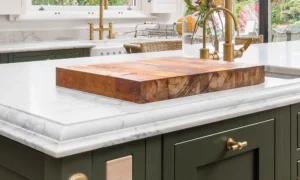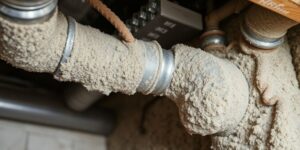What areas of a property are covered by a pest inspection?
Pest and building inspections ensure your investment’s structural integrity and safety when purchasing your first home or maintaining your current property. While building inspections focus on the overall condition of a property, pest inspections focus on areas where destructive pests may be hiding or causing damage. The foundation of a building is one of the most critical areas examined during pest inspections. Inspectors carefully assess the subfloor area, looking for signs of termite activity, wood rot, or other pest-related damage. Moisture-loving pests like termites and wood-boring beetles prefer this area.
- Crawl spaces
- Pier and beam structures
- Concrete slabs
- Wood-to-ground contact areas
External walls and cladding
The exterior of a building is often the first line of defence against pest infestations. Inspectors examine all external walls, paying close attention to areas where different materials meet. For example, where the cladding joins the foundation or roof. Areas of focus include:
- Weep holes in brick veneer
- Timber cladding and weatherboards
- Rendering and stucco finishes
- Expansion joints
Roof void and attic space
The roof void, or attic space, is a common hiding place for various pests, including rodents, possums, and birds. It’s also an area where termites cause significant damage unnoticed. Pest inspectors thoroughly examine this space, looking for the following:
- Evidence of termite mud leads or nests
- Rodent droppings or nesting materials
- Signs of bird or bat infestations
- Water damage that could attract pests
Internal walls and ceilings
Inspectors check all internal walls and ceilings inside the property for signs of pest activity. This includes looking for visible damage, such as bubbling paint or sagging ceilings, which could indicate a hidden pest problem.
- Wall cavities
- Cornices and architraves
- Areas around windows and doors
- Behind picture frames and large furniture items
Flooring
All types of flooring are inspected for signs of pest activity or damage. This includes:
- Timber floorboards
- Carpeted areas
- Tiled surfaces
- Concrete slabs
Inspectors look for signs of termite damage, wood rot, or other pest-related issues that may compromise flooring integrity.
Kitchen and bathroom areas
These are particularly vulnerable to pest infestations due to water and food sources. Pest inspectors pay special attention to:
- Under-sink cabinets
- Behind the appliances
- Plumbing penetrations
- Tiled areas and grout lines
These areas are often attractive to cockroaches, ants, and silverfish.
Windows and doors
Pests enter through windows and doors. Inspectors examine:
- Window frames and sills
- Door frames and thresholds
- Weather stripping and sealing
They look for gaps, cracks, or damage that could allow pests to enter the property.
Fences and gates
While only sometimes included in standard pest inspections, some inspectors will assess fences and gates, mainly if they’re made of timber. These structures are susceptible to termite activity and wood rot, which can spread to the main building.
Garages and outbuildings
Comprehensive pest inspections include detached structures such as garages, sheds, and workshops. These areas harbour pests that may eventually enter the main living areas. check out the post right here about the building inspections Sydney.
A professional pest inspection covers many areas throughout a property, from the foundation to the roof and surrounding landscape. Property owners and potential buyers better appreciate the value of these inspections by understanding what areas are typically examined. As a result, they can make informed investment decisions.






